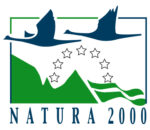Sigma Plan
Restoration of river Scheldt and its tributaries
The Sigma Plan protects Flanders from floods. In storm weather conditions, the tidal river Scheldt and its tributaries can reach dangerously high water levels and can even overflow their banks. That is why the Sigma Plan invests in sturdier and higher levees and in a chain of natural flood control areas in the river valleys. Areas like these can catch excess river water and this gives the rivers room to flow and to overflow in a controlled manner.
At the same time, in these areas, a vast nature area of 14 000 ha is created with wetlands. Tidal river creation is made possible by flood control areas with controlled reduced tide, specifically created for densely populated areas. Along the river, tidal nature is subject to the full range from sea water to fresh water, resulting in a broad variety of habitats. The marshlands, maintained by large herbivores are popular breeding grounds for birds such as little bittern, blue throat, marsh harrier and common bittern. After decades of absence, otter and beaver have returned to the river valley. Because of the investments in a better water quality, removal of physical barriers and creating better habitats, fish such as eel and twait shad migrate freely now.
After a long and difficult period of acceptation and because of hard work and a lot of consultation, people living and recreating in the valley, start appreciating and enjoying the nature development. The modular system of inundation areas is, up to a certain level, easily adaptable to future predictions of rising sea levels. Since we are simultaneously investing in wetlands, it is a ‘no regret’ measure against climate change. In recent years we have been dealing with long drought periods in the summer, as a result of which we raised the water level in winter and now use the wetlands as storage for rainwater.
A detailed monitoring of physical and biological parameters helps us to combine the different needs such as flood risk reduction, wetland restoration, shipping and sand extraction, living and recreation.
• Salt and fresh water marshlands
• Tidal willow forest
• Alder woodlands
• Tidal river
The executors of the Sigma Plan are De Vlaamse Waterweg nv and Natuur en Bos (Agency for Nature and Forests). In addition to water safety, the Plan also focuses on the development of river nature, recreational facilities and local economies
one. A detailed monitoring of physical and biological parameters helps us to combine the different needs of the partners such as flood risk reduction, shipping and sand extraction, wetland restoration and recreation.
The river Scheldt is important for birds, such as little bittern, blue throat and marsh harrier. After decades of absence, otter and beaver have returned to the river valley and fish as eel and twait shad use the river to
migrate. The people living and recreating in the valley, appreciate the nature development.
How to evolve from NIMBY to ‘please in my backyard’ and create co-ownership
How to manage an integrated project
Monitoring methods and results
Fish migration passages

The Sigma Plan protects Flanders from floods. In storm weather conditions, the tidal river Scheldt and its tributaries can reach dangerously high water levels and can even overflow their banks. That is why the Sigma Plan invests in sturdier and higher levees and in a chain of natural flood control areas in the river valleys. Areas like these can catch excess river water and this gives the rivers room to flow and to overflow in a controlled manner.
At the same time, in these areas, a vast nature area of 14 000 ha is created with wetlands. Tidal river creation is made possible by flood control areas with controlled reduced tide, specifically created for densely populated areas. Along the river, tidal nature is subject to the full range from sea water to fresh water, resulting in a broad variety of habitats. The marshlands, maintained by large herbivores are popular breeding grounds for birds such as little bittern, blue throat, marsh harrier and common bittern. After decades of absence, otter and beaver have returned to the river valley. Because of the investments in a better water quality, removal of physical barriers and creating better habitats, fish such as eel and twait shad migrate freely now.
After a long and difficult period of acceptation and because of hard work and a lot of consultation, people living and recreating in the valley, start appreciating and enjoying the nature development. The modular system of inundation areas is, up to a certain level, easily adaptable to future predictions of rising sea levels. Since we are simultaneously investing in wetlands, it is a ‘no regret’ measure against climate change. In recent years we have been dealing with long drought periods in the summer, as a result of which we raised the water level in winter and now use the wetlands as storage for rainwater.
A detailed monitoring of physical and biological parameters helps us to combine the different needs such as flood risk reduction, wetland restoration, shipping and sand extraction, living and recreation.

• Salt and fresh water marshlands
• Tidal willow forest
• Alder woodlands
• Tidal river
The executors of the Sigma Plan are De Vlaamse Waterweg nv and Natuur en Bos (Agency for Nature and Forests). In addition to water safety, the Plan also focuses on the development of river nature, recreational facilities and local economies
one. A detailed monitoring of physical and biological parameters helps us to combine the different needs of the partners such as flood risk reduction, shipping and sand extraction, wetland restoration and recreation.
The river Scheldt is important for birds, such as little bittern, blue throat and marsh harrier. After decades of absence, otter and beaver have returned to the river valley and fish as eel and twait shad use the river to
migrate. The people living and recreating in the valley, appreciate the nature development.







